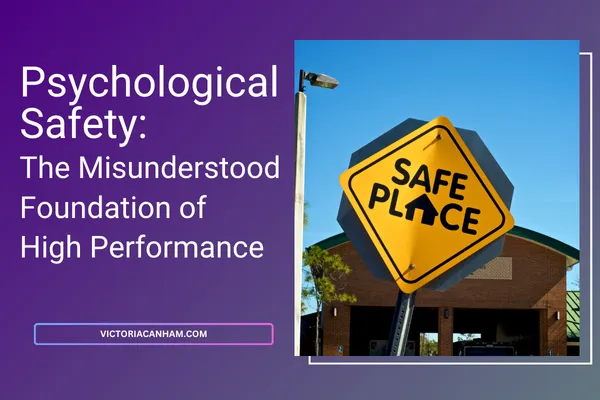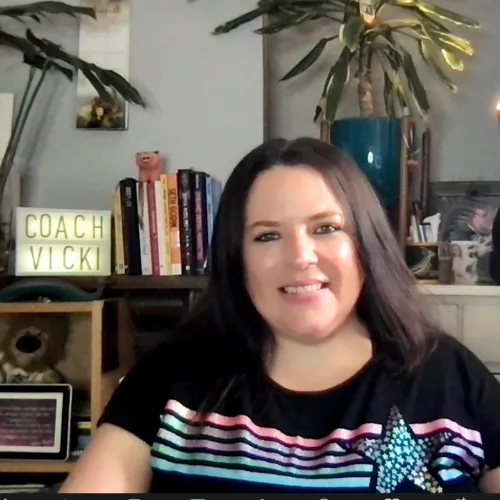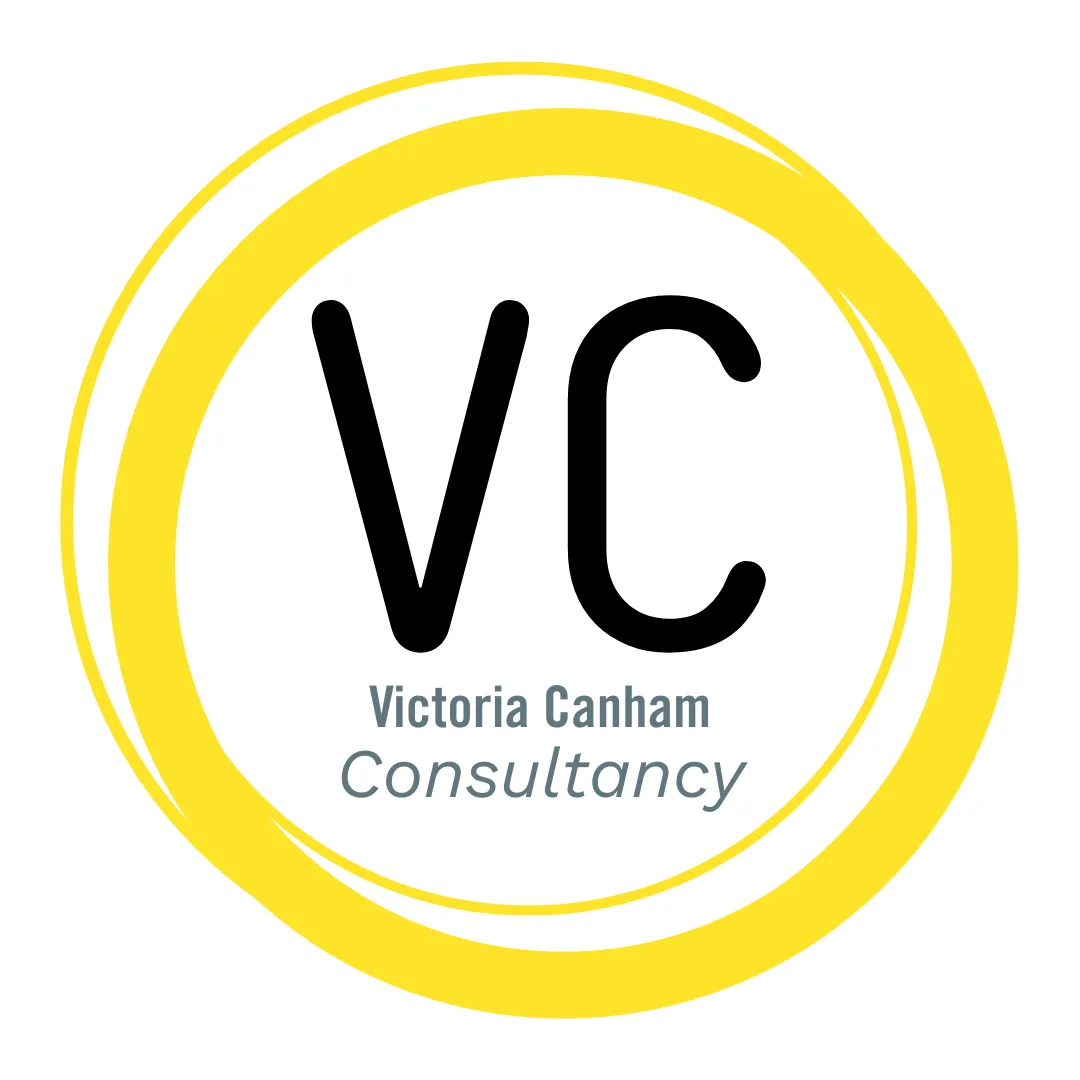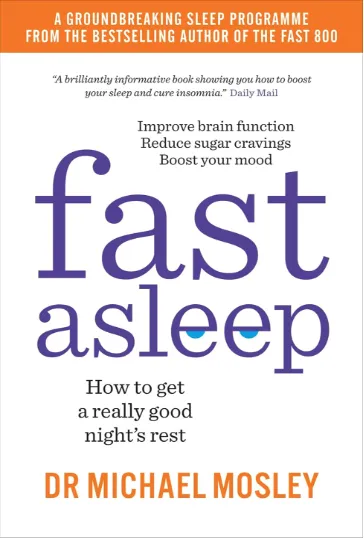Psychological Safety: The Misunderstood Foundation of High Performance
Victoria Canham • 28 October 2025 • 5 min read

"A shared belief held by members of a team that the team is safe for interpersonal risk-taking."
- Amy Edmondson
The Hidden Leadership Gap
The term 'psychological safety' has become ubiquitous in corporate conversations, and for good reason. In an era demanding constant innovation and agility, an organisation's ability to harness every employee's voice, challenge assumptions, and learn from failure is essential for survival.
Yet despite widespread recognition, psychological safety remains one of the most misunderstood concepts in modern workplace culture. Too often, it's conflated with comfort, niceness, or avoiding difficult conversations. Even more problematic, many organisations treat it as a standalone initiative rather than what it truly is: the operating system of your entire employee experience.
After years of leading culture change initiatives and working across the complete employee journey, I've seen firsthand what happens when organisations genuinely understand psychological safety, and what happens when they don't. This article is the first in a series where I'll share practical insights from that work.
What Psychological Safety Actually Means
The concept was pioneered by Harvard Business School professor Amy Edmondson, who defined it as:
"A shared belief held by members of a team that the team is safe for interpersonal risk-taking."
This definition contains a subtle but profound insight. Psychological safety isn't about feeling comfortable or cozy. It's about feeling secure enough to take risks. When a team has genuine psychological safety, individuals are confident that:
✳️ They can admit a mistake without being publicly shamed or punished
✳️ They can ask a "basic" question without appearing incompetent
✳️ They can offer a half-formed idea without being dismissed or ridiculed
✳️ They can challenge the status quo or respectfully disagree with leadership without fear of reprisal
✳️ They can raise concerns about problems they're seeing without being labelled negative
In essence, it's a culture where the focus is on learning and growth, not on blame and self-protection.
Safety vs. Comfort
This is where many well-intentioned organisations go astray. They mistake psychological safety for emotional comfort, and the difference is crucial.
Psychological Safety creates an environment where constructive friction is encouraged. It's safe to have difficult conversations, safe to give tough feedback, and safe to hold people accountable. This is the foundation of high performance.
Emotional Comfort, by contrast, is about avoiding tension or disagreement. People are "nice" to each other, but problems get swept under the carpet, honest feedback is avoided, and accountability becomes impossible. This path leads to mediocrity, stagnation and massive conflict.
A genuinely safe workplace is one where a team can engage in robust, even heated, debate about strategy, knowing that the disagreement is about the work, not personal attacks. This is what drives breakthrough thinking and prevents costly mistakes.
Consider the difference:
Low safety, low comfort: Fear-based culture where people avoid speaking up and tension is high. Toxic and unsustainable.
Low safety, high comfort: "Nice" culture where people avoid conflict and difficult truths. Comfortable but ultimately ineffective.
High safety, low comfort: High-challenge culture where tough conversations happen but feel threatening. Better than the above, but exhausting.
High safety, high comfort: The ideal environment where people can engage in challenging work and difficult conversations within a fundamentally supportive environment.
Why This Matters for Your Organisation
When employees feel psychologically unsafe, they spend their energy managing how they're perceived, trying to appear competent, informed, and engaged while avoiding anything that might make them look bad. That cognitive load is enormous, and it's energy that could be directed toward actual work.
The consequences are tangible:
✳️ Innovation dies: People won't share unconventional ideas that might fail
✳️ Problems stay hidden: Issues fester until they become crises because people fear being the messenger
✳️ Knowledge silos form: People hoard information rather than risk looking stupid by asking questions
✳️ Talent leaves: Your best people—those with options—won't tolerate fear-based cultures
✳️ Decision-making suffers: Leaders only hear what people think they want to hear
Psychological safety isn't a "soft" issue or a nice-to-have cultural add-on. It's the infrastructure that allows everything else to work.
This Is a Leadership and Culture Challenge
Through my work in culture transformation, I've learned that psychological safety cannot be installed like software or achieved through a training module because it is not a programme you implement; it's an environment you cultivate.
This requires three interconnected elements:
✳️ Leadership behaviour: Leaders must consistently model curiosity over judgment, vulnerability over invincibility, and accountability over blame. One instance of shooting the messenger can undo months of trust-building.
✳️ Cultural systems: Your values, decision-making processes, meeting structures, and especially how you respond to mistakes and failures—these must all reinforce safety rather than undermine it.
✳️ Employee experience design: From onboarding through exit, every touchpoint in the employee journey either builds or erodes psychological safety. It must be designed intentionally.
This is fundamentally a culture and leadership challenge, which is precisely why my background in culture change and the employee journey provides a unique lens for addressing it.
What's Coming in This Series
Over the coming articles, we'll explore:
✳️ Why psychological safety in the workplace matters: The hidden costs of fear and the measurable benefits of getting this right
✳️ The pillars of psychological safety: The specific, tangible elements you can assess and develop
✳️ How to identify if your teams feel psychological safety: Practical diagnostic approaches that go beyond surveys
✳️ Accessible approaches to building psychological safety: Proving that transformation doesn't require massive budgets, just the right methodology and commitment
Psychological safety isn't mysterious, and it isn't impossibly complex. But it does require expertise in culture, leadership, and the employee experience; expertise that I've spent my career developing.
In the next article, we'll examine exactly why psychological safety matters by exploring the real, often hidden costs of fear in organisations.
This is Article 1 in a series on Psychological Safety in the Workplace. Follow along as we explore how to build cultures where people can do their best work.
♦️ Hi. I'm Vicki, and I help businesses build high-performing, loyal teams by mastering the employee journey. I partner with leaders to drive tangible change, transforming company culture from a pretty promise on a slide deck into a daily reality. My approach goes beyond outdated HR strategies and gets to the heart of what truly motivates and retains your people.
Here's how I can support you:
Consulting & Coaching
I work directly with business leaders to diagnose and transform their employee experience, from culture to performance management. If you're ready to stop the cycle of burnout and build a team that thrives, not just survives, let's talk.
Click here to book a free 30-minute strategy call. No fluff, no sales pitches, just a direct conversation about your biggest challenges.
Talks & Keynotes
I deliver engaging keynotes that go beyond theory to provide actionable insights on leadership, culture, and performance. My talks are perfect for leadership teams and conferences looking to inspire real change.
Workshops & Training
My bespoke workshops and training sessions are designed to equip your leaders with the practical tools they need to build, manage, and retain exceptional teams. These are highly interactive sessions focused on creating measurable improvements in your business.
👉 Book a Clarity & Culture Call
Follow me on LinkedIn for more insights on building high-performing teams in 2025.
Comment On This Article
Recommended Reading
Fast Asleep: How to get a really good night's rest by Dr Michael Mosley
A good night's sleep is essential for a healthy brain and body. So why do so many of us struggle to sleep well? In Fast Asleep, Dr Michael Mosley explains what happens when we sleep, what triggers common sleep problems and why standard advice rarely works.
Prone to insomnia, he has taken part in numerous sleep experiments and tested every remedy going. The result is a radical, four-week programme, based on the latest science, designed to help you re-establish a healthy sleep pattern in record time.
With plenty of surprising recommendations - including tips for teenagers, people working night shifts and those prone to jet lag - plus recipes which will boost your deep sleep by improving your gut microbiome, Fast Asleep provides the tools you need to sleep better, reduce stress and feel happier.
We’re not just about overcoming obstacles, we’re about transforming lives.
Book Recommendation

Victoria Canham - Performance and People Strategic Partner
Victoria Canham is an ICF-accredited Certified Professional Coach and the founder of Victoria Canham Consultancy. We are a specialist performance consultancy partnering with senior leaders and HR teams to elevate culture, leadership, and employee experience. Rooted in behavioural insight and change expertise, we diagnose what's truly holding performance back, co-creating practical, strategic interventions that drive sustainable business results and build workplaces that work—for people and performance.
Hang out with us on social media
SOCIAL FEED


💸 Your people don’t leave for money. 💣 They leave for culture. 🔧 I fix that. 🏆 Retention & performance strategy that works.
Book a ☎️ | Fix the Leaks
LET'S WORK TOGETHER
Book a call to find out how I can help you to achieve your peak performance.
© Copyright 2025 Victoria Canham Coaching | Website built by Me on FEA Create (aff.)
Performance Coaching Reading, London, Berkshire, Oxford | St George's Road, Reading, Berkshire, United Kingdom, RG30 2RL | +44 7377 527 529 | [email protected] Open Monday to Friday 9 am until 5 pm

 RSS Feed
RSS Feed